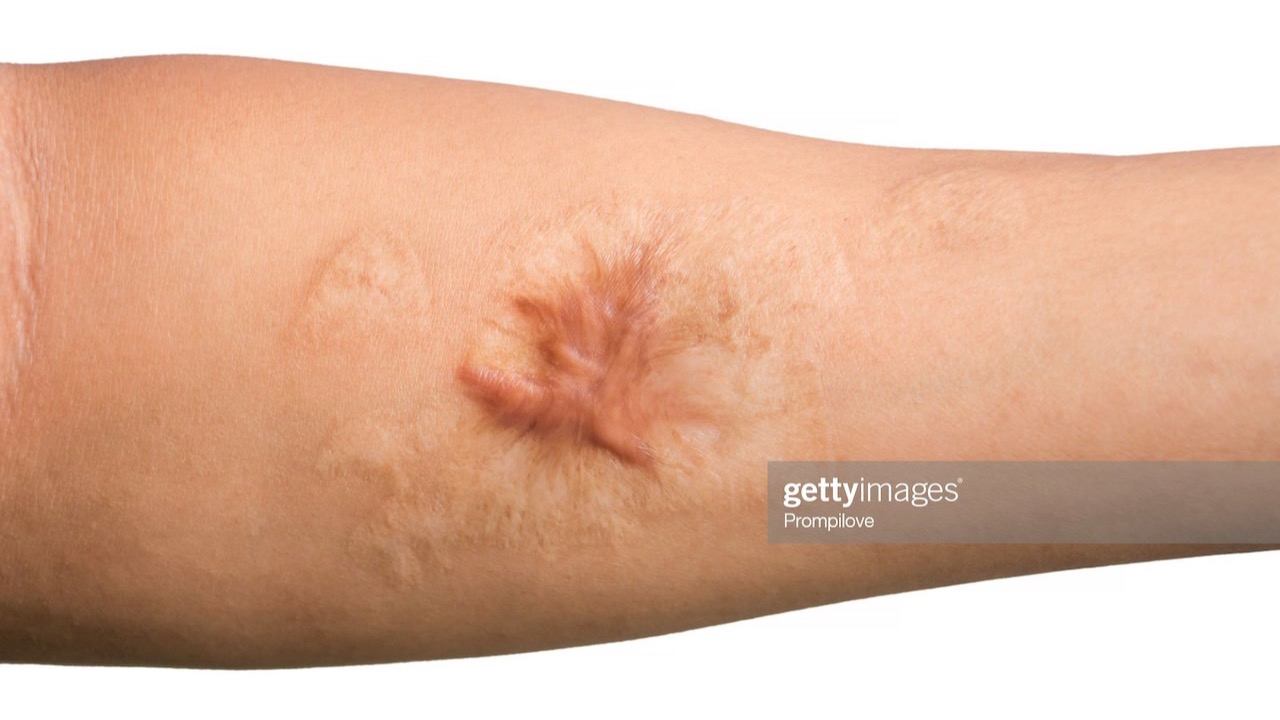4 Tips for Hypertrophic Scar Management
Written on March 05, 2022
In a matter of seconds, your life can change forever. Burn survivors know this reality intimately; enduring a burn injury is traumatic. After the initial shock of a burn injury subsides, burn survivors must walk a long and winding road of treatment and recovery. Progress is not always linear or without temporary setbacks.
As the skin begins to heal in the 14-21 days after a burn injury (and, in some severe cases, much longer), scars often form. Scars can lead to physical discomfort, delayed recovery, and aesthetic concerns, as well as long-lasting effects on a person’s self-perception and self-confidence. But there is hope for burn survivors looking to manage and mitigate their hypertrophic scars.
What Are Hypertrophic Scars?
Typically, scarring resolves or matures in 12-18 months and diminishes in color and sensitivity over time. Some types of scarring, however, can last longer. Understanding what they are and how they form can help burn survivors begin to devise a treatment plan with the help of their medical team. Hypertrophic scars:
Form within the area of the original burn site.
Develop within the first few months of an injury.
Have deep red to purple hues.
Can become hypersensitive and itchy.
Tend to be most noticeable around joints where skin tension is high.
Keloid scars, in contrast, develop into smooth, firm growth and are the result of spontaneous scar formation. They’re most often caused by burns, minor injuries, insect bites, and acne. And whereas hypertrophic scars tend to localize in the area of the original burn injury, keloid scars can grow much larger than the initial area of impact.
Common Concerns About Hypertrophic Scars
Many people who have suffered from burn injuries wonder how long their scars will last. Some scars, including hypertrophic scars, may never completely disappear. But knowing what external factors most aggravate scar healing can help survivors take proactive steps to manage hypertrophic scar symptoms.
Contractures
After a burn injury, survivors experience limited mobility. Usually, as survivors begin their treatment plans, they begin to notice incremental progress in their ability to move, care for themselves, and execute routine daily tasks. But survivors who develop contractures, or scars across joints, often deal with long-term immobility. Scars can be dry and lead to cracking skin. Contractures can also be more sensitive to the sun and chemicals.
Sun Exposure
Burn survivors should avoid direct sunlight as much as possible. This means planning outdoor activities early in the morning or late in the day to avoid intense sun exposure. It also means using an SPF of at least 30 at all times and reapplying regularly.
Itching
Excessive itching is not only frustrating—but it can also be detrimental to the progress burn survivors are making in their recovery. Unfortunately, burns can destroy oil glands that normally hydrate the skin and prevent itching. Simple solutions, such as frequent moisturizing (including after showering), can ward off pesky, harmful itching cycles.

Tips for Managing Hypertrophic Scars
To ensure you receive the best care and heal your burn injuries healthfully, you should consult both your physician and your therapy team. No single treatment plan will satisfy every patient. Sometimes, it simply comes down to trial and error. That’s why it is so important to lean on the specializations of your medical teams. Together, they can help you counteract some of the most common concerns about hypertrophic scars.
1. Custom Pressure Garments
There is no one treatment that fits everyone. However, many medical professionals recommend custom pressure garments, which can be used to decrease itching and scar formation. They should be worn for up to 23-24 hours per day to help reduce itching and to protect the skin.
2. Silicone Gel Sheets
For some burn survivors, silicone gel sheets provide relief from itching and dryness without limiting mobility. They can be worn underneath pressure garments or casts. However, some people are sensitive to silicone and should consult with their doctor before use.
3. Custom Inserts
Pressure can also help to alleviate pain and improve healing. Some therapists recommend custom-made inserts, which can be worn under gloves, compression bandages, or specially made garments. Sometimes these garments are made from soft foam, and other times they are made from a rubber consistency.
4. Surgical Treatments
In some cases, especially if burns are impeding an individual from performing daily tasks, they may opt for surgical treatment, including laser therapy. This should be based on the medical advice of a doctor after careful evaluation.
Next Steps You Can Take Today
Finding healing as a burn survivor can feel daunting and even isolating. After all, treatment won’t happen overnight. But if you are struggling to imagine a path forward, take heart: Recovery is possible. The key is finding the right resources and community to help you get there.
The Phoenix Society for Burn Survivors is committed to supporting and empowering those impacted by a burn injury, including the survivors and their friends and family. There’s no reason to be alone when you have a community of fellow survivors who understand what you’re going through and are there to lend a hand. For more information on getting started, check out our guide to navigating the best resources available to those in the burn community.